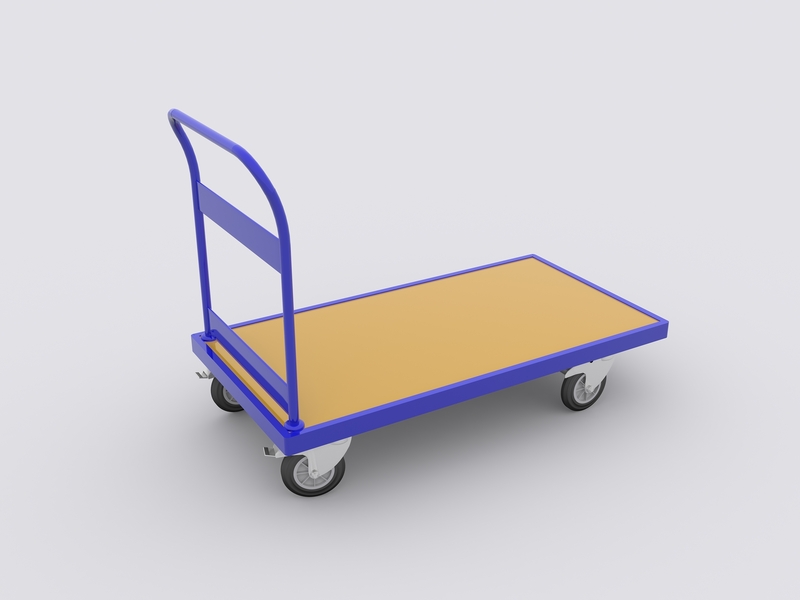Kinetic Lifting: The Secret to Harnessing Your Natural Power
Kinetic lifting is revolutionizing the way we think about strength, movement, and natural power. In a fitness landscape dominated by endless exercise fads and manufactured supplements, many are seeking ways to tap into their body's full potential--without shortcuts or gimmicks. Kinetic lifting provides a holistic, sustainable approach that anyone can incorporate, regardless of fitness level, age, or experience.
What is Kinetic Lifting?
Kinetic lifting, also called kinetic strength training or kinetic power lifting, is a synergistic method of movement focusing on efficient energy transfer throughout the body. Unlike traditional weightlifting, which often emphasizes isolated muscle groups and repetitive motions, kinetic lifting utilizes compound movements, body awareness, and momentum to generate natural force.
The core philosophy of kinetic lifting is simple: harness your body's full kinetic potential by optimizing muscle coordination, joint alignment, and energy flow. This technique isn't just for elite athletes; it's a secret anyone can use to unlock new levels of functional strength, injury resilience, and athletic performance.

The Science Behind Kinetic Power
Understanding Kinetics in Human Movement
Kinetics, as a field, involves the study of forces that cause motion. In the human body, kinetic energy is generated through muscular contractions and transferred via connective tissues, bones, and joints.
- Ground Reaction Force: When your foot presses into the ground, your skeleton and muscles react by producing force, propelling the body upward, forward, or laterally.
- Elastic Energy Storage: Tendons and connective tissues can store elastic energy, which is released explosively, much like a stretched rubber band.
- Sequential Activation: Efficient movement patterns allow force to flow from the ground up through your kinetic chain--the sequence of muscles, joints, and bones involved in a movement.
Understanding these concepts is crucial in kinetic lifting. Instead of isolating muscles, kinetic lifters train their bodies to operate as cohesive units, ensuring more total power, better stability, and reduced risk of injury.
The Benefits of Kinetic Lifting
Why is kinetic lifting being hailed as a gamechanger? Here's what separates it from conventional weightlifting and fitness programs:
- Improved Full-Body Strength: Engages multiple muscle groups simultaneously, building balanced power and coordinated strength rather than isolated muscle size.
- Enhanced Athleticism: Boosts agility, balance, and explosiveness essential for all sports and daily activities.
- Injury Prevention: Promotes proper biomechanics, joint alignment, and neuromuscular control, drastically reducing the risk of strains and tears.
- Efficient Workouts: Fewer movements are needed to train more muscle, saving time while delivering total-body results.
- Functional Fitness: Mimics real-world actions, leading to strength that translates outside the gym.
- Accessible for All: Adaptable to any fitness level, no fancy equipment required.
Whether you're a weekend warrior, a senior looking to stay active, or a professional athlete, kinetic lifting offers a path to achieve your greatest physical self using your body as a unified system.
Kinetic Lifting Techniques: How to Unlock Your Natural Power
1. Embrace The Kinetic Chain Principle
The kinetic chain refers to how energy and force travels through segments of the body during movement. In kinetic lifting, you learn to create and transfer energy efficiently, from your feet through your core and into your arms or load.
- Practice ground-to-overhead movements (e.g., clean and press) that force the coordination of your entire body.
- Focus on posture and alignment to facilitate uninterrupted energy flow.
- Prioritize strong foot contact and core engagement in every exercise.
2. Momentum and Acceleration: Move with Intent
Unlike classic resistance training, which might emphasize slow, controlled lifts, kinetic power lifting encourages strategic use of momentum. This improves explosive strength and teaches the body to control and channel force.
- Perform dynamic lifts like kettlebell swings, medicine ball slams, or Olympic movements.
- Develop body awareness by learning to accelerate and decelerate loads with precision.
- Add plyometric drills to train for speed and elasticity.
3. Compound Movements Over Isolation
Compound exercises recruit several muscle groups and joints. For kinetic strength optimization, these movements are essential:
- Squats: Full-depth squats build integrated strength in legs, hips, and core.
- Deadlifts: Perfect for practicing ground force transfer and posterior chain engagement.
- Push Presses: Coordinate lower body power with upper body strength.
- Pull-ups and Rows: Enhance kinetic linkage between upper and lower body.
4. Master Functional Movement Patterns
The best kinetic lifters don't just get strong; they move effortlessly and efficiently. Key patterns include:
- Hinging (hip-dominant, as in deadlifts and swings)
- Squatting (knee and hip synergy)
- Pushing (horizontal and vertical)
- Pulling (rows, pull-ups)
- Rotating (medicine ball throws, Russian twists)
Quality over quantity is crucial. Each rep should be performed with maximum intention and awareness.
5. Integrate Breath and Core Control
Breathing isn't just for oxygen. Proper breath control supports intra-abdominal pressure, stabilizes your spine, and augments total power output.
- Practice diaphragmatic breathing (belly breaths) during all lifts.
- Synchronize inhales and exhales with the hardest part of each movement.
- Engage your core as a foundation for every exercise.
The Mind-Body Connection in Kinetic Strength Training
Building Awareness: The First Step
Kinetic lifting is much more than simply moving weight. It's a practice in mindfulness--being fully present with each movement, breath, and intention. Developing a strong mind-body connection will:
- Enhance movement quality and safety
- Allow you to feel and adjust minute changes in alignment for optimal power
- Prevent distraction and keep your form perfect under fatigue
Visualization Techniques
Elite athletes use mental imagery to enhance performance. Before a lift, visualization primes neural pathways, creating a muscle memory effect that makes physical execution easier and more efficient.
- Picture each movement in your mind before performing it
- Imagine energy transferring through your kinetic chain from feet to hands
- Focus on how it feels rather than just how it looks
Kinetic Lifting Workout Examples
Curious how to bring kinetic lifting into your program? Here's a sample full-body kinetic workout suitable for beginners and seasoned lifters alike:
- Dynamic Warm-Up (10 Minutes)
- Arm circles
- Leg swings
- Torso rotations
- Light squat jumps
- Compound Strength Series (Perform as a circuit, 4 rounds)
- Barbell or dumbbell squats x10
- Kettlebell swings x15
- Push-ups x10-15 (focus on power)
- Dumbbell renegade rows x10/side
- Medicine ball slams x10
- Elastic Power Session
- Standing broad jumps x6
- Plyometric lunges x20
- Cool Down & Breathwork
- Slow, deep diaphragmatic breathing for 3-5 minutes
- Light stretching with mindful movement
Pro Tip: For optimal results, focus on explosive, controlled movements and integrate your full body in every exercise. Don't rush--form and awareness come before load or speed.
Transformational Results: Real Stories
Many who switch to a kinetic approach report faster strength gains, increased energy, and dramatically reduced pain and injuries. A few examples:
- Athletes: Report improved vertical jump, sprint speed, and agility on the field.
- Seniors: Notice easier daily movement, reduced falls, and greater confidence.
- Fitness Enthusiasts: Experience measurable gains in endurance, flexibility, and general well-being.
When you commit to kinetic strength training, you're not just lifting weights. You're learning to harness the entirety of your body's natural power, in ways that traditional training simply can't match.
Kinetic Lifting Tips for Success
- Start Slow: Focus on mastering form and body awareness before increasing weight or speed.
- Consistency: Practice regularly to engrain neural and movement patterns.
- Listen to Your Body: Respect fatigue, avoid pushing through pain, and prioritize recovery.
- Mix It Up: Include rotational, anti-rotational, plyometric, and grounded compound movements.
- Get Coaching: Consider working with a kinetic training expert, movement coach, or experienced personal trainer.
Kinetic Lifting vs. Traditional Strength Training
How does kinetic lifting differ from the typical routines found in commercial gyms?
| Traditional Lifting | Kinetic Lifting (Kinetic Power) |
|---|---|
| Focuses on isolated muscle groups | Focuses on full-body integration |
| Often performed sitting/lying down | Mostly performed standing, promoting natural alignment |
| Slow, controlled tempo | Emphasizes momentum, acceleration, and controlled deceleration |
| Low transfer to real-world or sport | High transfer to daily life and athletic performance |
| Repetitive, machine-based | Creative, bodyweight or free-weights |
Ultimately, kinetic lifting instills a deeper understanding of how your body is designed to move and exert force. This leads not only to improved strength but greater mobility, coordination, and power wherever you need it.
Frequently Asked Questions About Kinetic Lifting
Is kinetic lifting safe for beginners?
Yes! When practiced with proper technique and progression, kinetic lifting is extremely safe for all ages and levels. Beginners should emphasize learning correct movement patterns and seek guidance from skilled professionals as needed.
Do I need special equipment?
No. While tools like kettlebells, medicine balls, or resistance bands can be helpful, your own bodyweight is often enough. The most important aspect is intent and movement quality.
How often should I train?
Most people benefit from 2-4 kinetic workouts per week, allowing plenty of time for rest and recovery between sessions. Daily movement (walking, mobility work) is always encouraged.
Will kinetic lifting help with weight loss?
Yes--as a total-body approach, kinetic lifting burns more calories per minute than most isolated routines and creates a metabolic boost. Combined with healthy nutrition, it's a powerful fat-loss tool.

Getting Started With Kinetic Strength Training
Ready to experience the *secret* of kinetic lifting for yourself? Here's how to begin:
-
Learn Movement Fundamentals:
- Master core kinetic movements: squats, hinges, pushes, pulls, and rotations.
- Develop mind-body awareness through slow, controlled practice.
-
Integrate Dynamic Patterns:
- Start adding momentum-based exercises: kettlebell swings, throws, dynamic lunges.
- Explore bodyweight plyometrics.
-
Program for Progression:
- Begin with manageable sets and reps, focusing on perfect technique.
- Progress resistance, volume, or speed gradually over weeks.
-
Track and Reflect:
- Keep a training journal. Note improvements in strength, ease of movement, and energy.
- Celebrate small milestones as your natural power grows.
Conclusion: Unleash Your Natural Power with Kinetic Lifting
The secret of kinetic lifting is no longer reserved for elite athletes or mystical masters. It's a scientifically proven, approachable method--one that allows you to harness the immense natural power already within your body.
Whether you aim to build strength, improve your athleticism, prevent injuries, or just feel better in your skin, kinetic lifting is the key to real, lasting progress. Embrace movement as nature intended. Explore the dynamic potential of your muscles, joints, and connective tissues together. Step beyond isolated exercises, and discover the joy of unlocking your kinetic power. With consistency and awareness, you'll find a transformation that goes beyond the gym--into every aspect of your daily life.
Start your kinetic strength journey today and unleash the natural power you were born to use!



